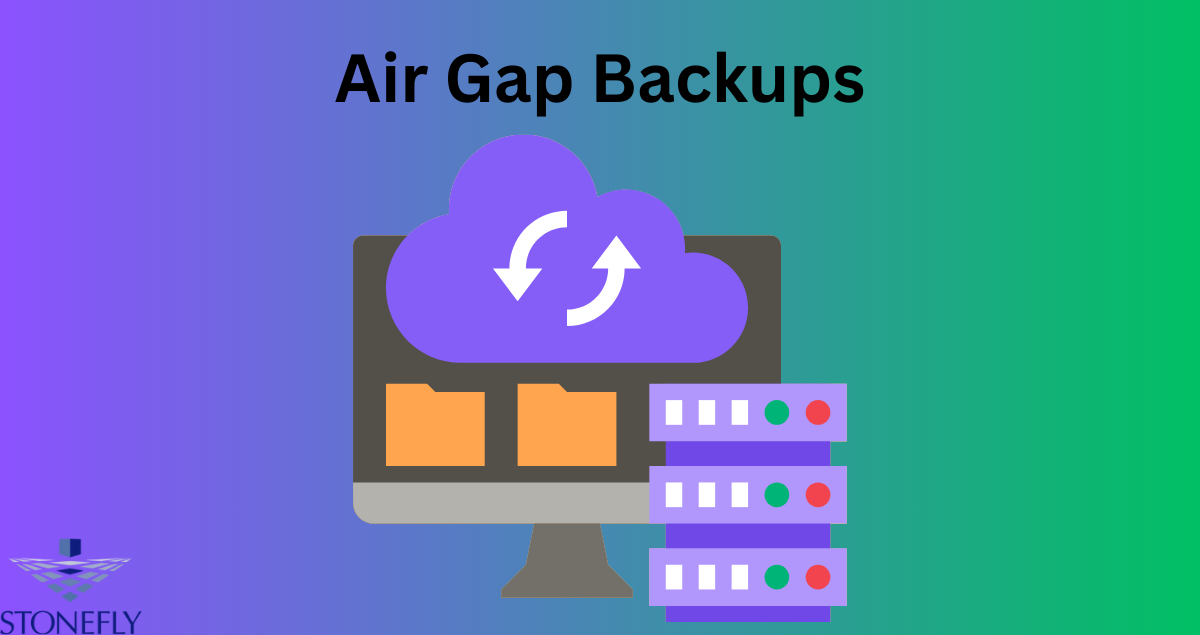The Ultimate Guide to Air Gap Backups for Unparalleled Data Protection
In today’s digital world, data breaches and ransomware attacks are becoming increasingly common, leaving individuals and businesses vulnerable. But what if there was a way to ensure your critical data remains untouched by cyber threats? Enter air gap backups—a robust solution for safeguarding your data. In this blog post, we will explore the concept of Air Gap Backups, their advantages, and how you can implement them effectively.
Introduction to Air Gap Backups
In the realm of data protection, air gap backups are a game-changer. An air gap backup is a data backup strategy where the backup storage is physically isolated from the network and any potential cyber threats. This means that the backup device is not connected to the internet or any other networks, creating a “gap” that cybercriminals cannot cross.
The importance of air gap backups cannot be overstated. With cyberattacks on the rise, especially ransomware, having a secure and inaccessible backup can be the difference between a minor inconvenience and a major catastrophe. By keeping a copy of your critical data offline, you ensure that it remains safe even if your primary systems are compromised.
In this guide, we will break down the mechanisms behind air gap backups, their benefits, how to implement them, and much more. Whether you are an individual looking to protect personal data or a business aiming to secure sensitive information, this comprehensive guide will equip you with the knowledge to get started.
How Air Gap Backups Work
Understanding how air gap backups work is crucial to implementing them effectively. The process involves creating and maintaining backups that are not just logically separate but also physically and temporally isolated. Here’s how each type of air gap functions:
Physical Air Gaps
A physical air gap means that there is no direct connection—wired or wireless—between the backup storage and the internet or any other network. This can be achieved by using removable storage devices like external hard drives or tape drives, which are disconnected from the system after the backup process.
Logical Air Gaps
Logical air gaps involve creating barriers within the network so that even if the system is online, the backup storage remains inaccessible. This can be implemented using network segmentation, where the backup storage is placed on a separate subnet with strict access controls.
Temporal Air Gaps
Temporal air gaps refer to the timing of the backups. Instead of continuous, real-time backups, data is backed up at specific intervals. During these intervals, the backup storage is disconnected, ensuring that even if an attack happens, the backup remains unaffected.
By combining these approaches, you can create a robust air gap backup system that provides multiple layers of security.
Advantages of Air Gap Backups
Air gap backups offer several unique benefits that make them an essential component of any data protection strategy. Here are some of the key advantages:
Protection Against Ransomware
One of the most significant benefits of air gap backups is their ability to protect against ransomware attacks. Since the backup storage is isolated from the network, ransomware cannot encrypt or delete the backup data, ensuring that you always have a clean copy to restore.
Immunity to Data Corruption
Air gap backups also provide immunity to data corruption. Whether due to software bugs, hardware failures, or malicious activity, data corruption can render your backups useless. However, with air gap backups, the isolated nature of the storage ensures that the backup data remains intact and uncorrupted.
Enhanced Security
By physically and logically isolating your backups, you add an extra layer of security that is difficult for cybercriminals to penetrate. This makes air gap backups an invaluable tool for protecting sensitive and critical data from unauthorized access.
Implementing Air Gap Backups
Setting up air gap backups may seem daunting, but with the right approach, it can be straightforward. Here’s a step-by-step guide to help you implement air gap backups effectively:
Step 1: Choose the Right Storage Medium
Select a storage medium that suits your needs. External hard drives, tape drives, and even cloud services with offline capabilities can be used for air gap backups. Ensure that the chosen medium can be physically disconnected from the network.
Step 2: Schedule Regular Backups
Establish a regular backup schedule that fits your data generation rate and business needs. For example, you might choose to perform weekly full backups and daily incremental backups. During these periods, ensure that the backup device is disconnected when not in use.
Step 3: Implement Access Controls
If you are using logical air gaps, set up strict access controls to ensure that only authorized personnel can access the backup storage. Use network segmentation and firewall rules to create a secure environment for your backups.
Step 4: Test Your Backups
Regularly test your backups to ensure that they can be restored successfully. This will help you identify any issues with the backup process and ensure that your data can be recovered when needed.
Step 5: Store Backups Securely
Store your backup media in a secure location, such as a locked cabinet or a secure offsite facility. This adds an additional layer of physical security to your air gap backups.
By following these steps, you can set up a robust air gap backup system that provides reliable protection for your data.
Real-World Examples
To illustrate the practical value of air gap backups, let’s look at some real-world examples of how they have saved data in critical situations.
Example 1: Healthcare Organization
A healthcare organization implemented air gap backups to protect patient records. When their primary network was hit by a ransomware attack, the air gap backups remained untouched. The organization was able to restore patient data quickly, minimizing downtime and ensuring continuity of care.
Example 2: Financial Institution
A financial institution used air gap backups to safeguard transaction records. During a cybersecurity breach, the primary systems were compromised, but the air gap backups were unaffected. The institution was able to restore transaction data without any loss, maintaining trust with their clients.
Example 3: Government Agency
A government agency adopted air gap backups to protect sensitive information. When a cyberattack targeted their network, the air gap backups provided a secure copy of critical data, allowing the agency to recover swiftly and prevent data loss.
These examples highlight the importance of air gap backups in providing a reliable and secure Data protection solution.
Challenges and Considerations
While air gap backups offer significant benefits, they also come with challenges and considerations that must be addressed.
Initial Setup Costs
Implementing air gap backups can involve initial setup costs, such as purchasing storage media and setting up network segmentation. However, these costs are often outweighed by the long-term benefits of data protection.
Maintenance and Management
Air gap backups require regular maintenance and management to ensure their effectiveness. This includes scheduling backups, testing restores, and managing access controls. Organizations must allocate resources to manage these tasks effectively.
Physical Storage Limitations
Physical air gap backups require secure storage for backup media. This can be a challenge for organizations with limited physical space. Offsite storage solutions can help address this issue.
By understanding these challenges and considering them in your implementation strategy, you can ensure the success of your air gap backup system.
The Future of Data Protection
As the landscape of data security continues to evolve, air gap backups will play an increasingly important role. Here are some trends to watch for in the future of data protection:
Integration with Cybersecurity Strategies
Air gap backups will become a critical component of broader cybersecurity strategies, providing an additional layer of protection against evolving threats.
Advances in Backup Technology
Advances in backup technology, such as improved storage media and more sophisticated access controls, will enhance the effectiveness of air gap backups.
Increased Adoption
As awareness of cyber threats grows, more organizations will adopt air gap backups as a standard practice for data protection.
By staying informed about these trends, you can ensure that your organization remains ahead of the curve in data security.
Conclusion
Air gap backups are a powerful tool for safeguarding your data against cyber threats. By implementing a robust air gap backup system, you can protect your critical data from ransomware, data corruption, and unauthorized access. Whether you are an individual or a business, consider incorporating air gap backups into your data protection strategy to ensure the security and integrity of your information.
FAQs
1. What is an air gap backup?
An air gap backup is a data backup strategy where the backup storage is physically isolated from the network, making it inaccessible to cyber threats.
2. How do air gap backups protect against ransomware?
Air gap backups protect against ransomware by ensuring that the backup storage is not connected to the network, preventing ransomware from accessing and encrypting the backup data.
3. What are the different types of air gaps?
The different types of air gaps include physical air gaps (where the backup storage is physically disconnected), logical air gaps (where the backup storage is isolated within the network), and temporal air gaps (where backups are performed at specific intervals).
4. Can I use cloud storage for air gap backups?
Yes, some cloud storage services offer offline capabilities that can be used for air gap backups. However, it is important to ensure that the cloud storage meets your security requirements.
5. How often should I perform air gap backups?
The frequency of air gap backups depends on your data generation rate and business needs. A common approach is to perform weekly full backups and daily incremental backups.




